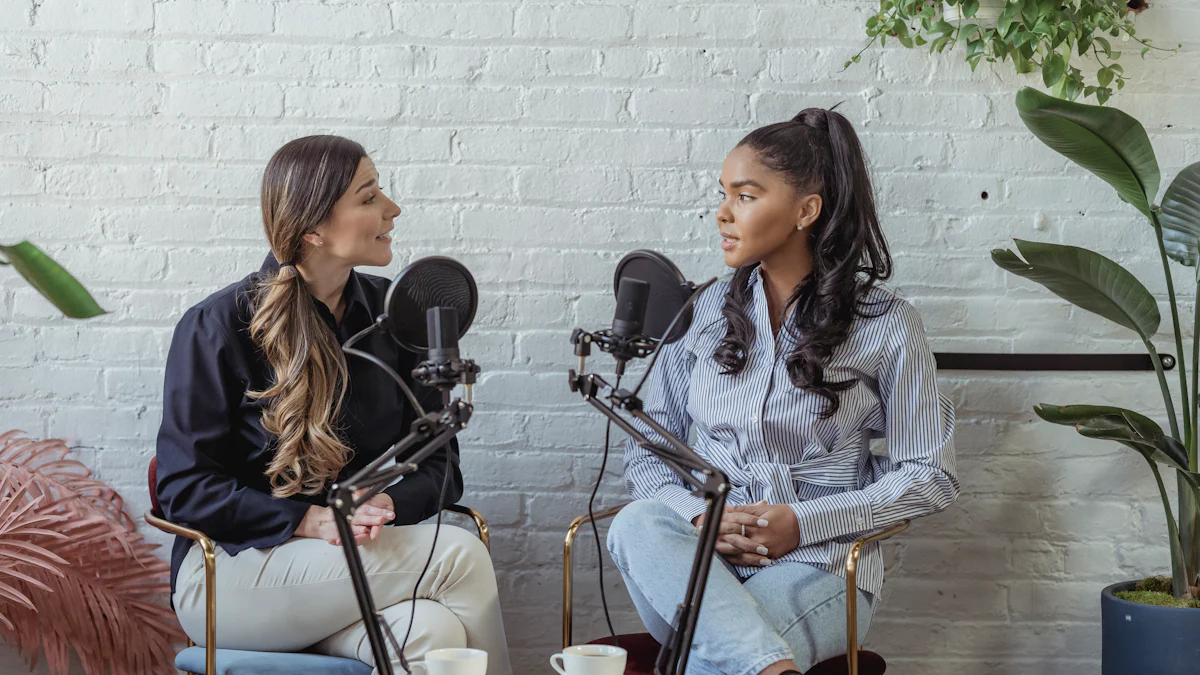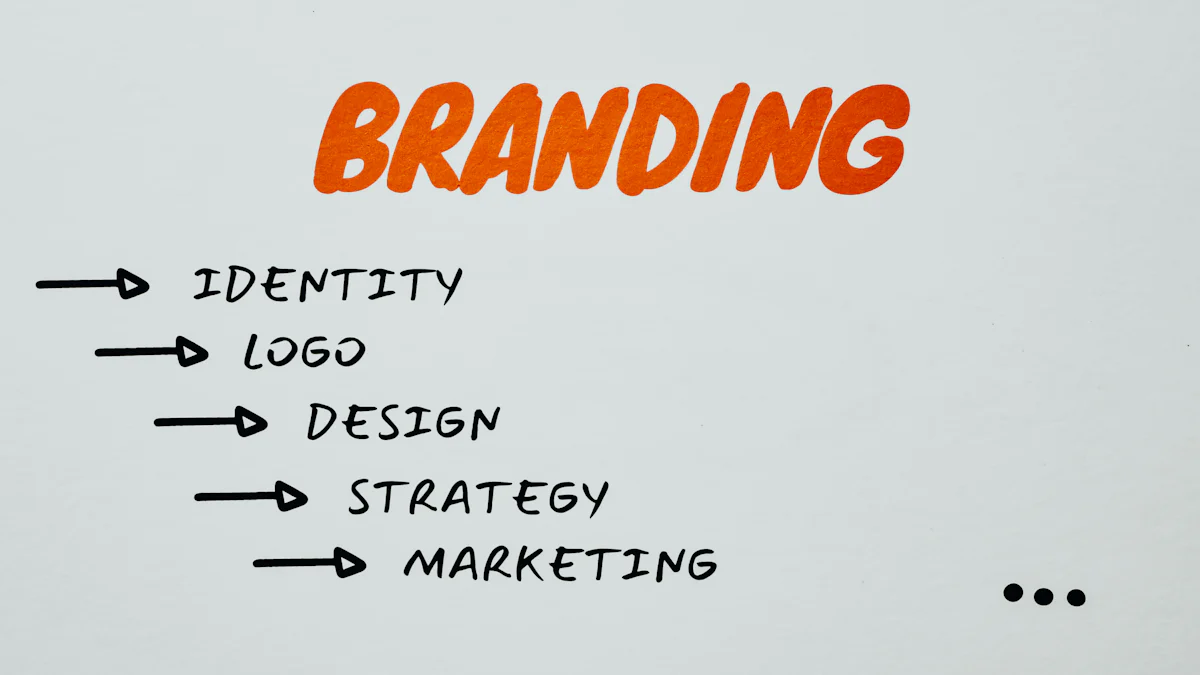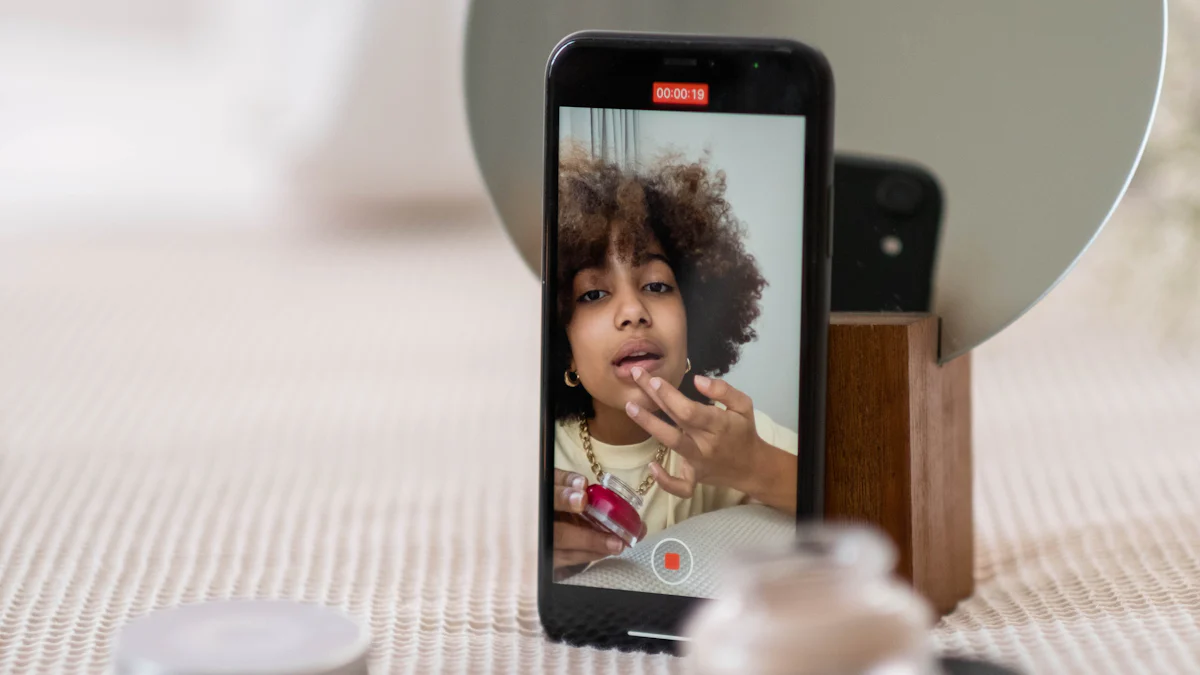Creative Strategies to Elevate Influencer Marketing Campaigns

Creativity can transform your influencer marketing campaigns from ordinary to unforgettable, providing excellent examples of influencer marketing that resonate with audiences. It’s not just about promoting a product; it’s about crafting experiences that leave a lasting impression. Did you know 80.5% of marketers believe creative effectiveness is crucial to campaign success? That’s because innovative ideas grab attention, spark conversations, and build trust. Take Nike’s “Dream Crazier” campaign, for example. By featuring relatable stories from female athletes, they created a movement, not just an ad. When you embrace creativity, you unlock the potential to connect with audiences in ways that truly matter, showcasing powerful examples of influencer marketing.
Understanding Influencer Marketing Campaigns
What Is Influencer Marketing?
Influencer marketing is all about partnering with individuals who have a strong online presence and a loyal following. These influencers use their platforms to promote your brand, product, or service in a way that feels authentic to their audience. Think of it as word-of-mouth marketing, but amplified through social media. Instead of traditional ads, you’re leveraging the trust influencers have built with their followers. This approach makes your message more relatable and impactful.
At its core, influencer marketing campaigns rely on three key components: clear goals, the right influencers, and authentic content. You need to define what you want to achieve—whether it’s boosting sales, increasing brand awareness, or driving website traffic. Then, you find influencers whose values align with your brand. Finally, the content they create should feel genuine, not forced. When these elements come together, your campaign has a solid foundation for success.
Why Creativity Is Key to Successful Influencer Marketing
Let’s face it—social media is crowded. Creativity is what helps your influencer marketing campaigns stand out. It’s not just about being different; it’s about connecting with people on a deeper level. Creative campaigns foster emotional connections, making your audience feel something. Whether it’s laughter, inspiration, or nostalgia, emotions make your brand memorable.
Creativity also enhances authenticity. When influencers share unique, engaging content, it feels personal rather than promotional. This builds trust, which is essential for any successful campaign. Plus, creative ideas are more likely to spark conversations and go viral, giving your campaign a broader reach.
Benefits of a Creative Influencer Marketing Strategy
A creative approach to influencer marketing offers several benefits. First, it helps you cut through the noise and grab attention. In a world where people scroll endlessly, you need something that makes them stop and take notice. Second, creativity strengthens your brand’s connection with its audience. When your campaigns feel fresh and relatable, people are more likely to engage with them.
Another advantage is authenticity. Creative content feels less like an ad and more like a story, which resonates better with audiences. Finally, a creative strategy can lead to higher ROI. When your campaigns are memorable and engaging, they drive better results, whether it’s more clicks, shares, or sales.
Key Creative Strategies for Influencer Marketing

Leverage Authentic Storytelling
Crafting Relatable and Emotional Narratives
Storytelling is the heart of influencer marketing campaigns. People connect with stories that evoke emotions or reflect their own experiences. When you focus on authentic storytelling, you create a bond with your audience that goes beyond just selling a product. For example, Häagen-Dazs collaborated with influencers to promote a buy-one-get-one campaign. They hosted rooftop parties and shared stories that felt personal, resulting in over 14 million impressions. Similarly, Nike’s “Dream Crazier” campaign used powerful narratives from female athletes, inspiring audiences with themes of empowerment and perseverance.
Relatable storytelling doesn’t just grab attention—it builds trust. When content creators share genuine experiences, their followers feel seen and understood. This emotional connection makes your brand memorable and fosters loyalty.
Aligning Stories with Brand Identity
Your brand’s story should always align with its values. Consistency across campaigns and customer interactions reinforces credibility. For instance, Canon’s “Bring It” campaign used YouTube influencers to create tutorials and storytelling videos. This approach resonated with photography enthusiasts, strengthening Canon’s identity as a trusted brand for creatives. Authentic storytelling also invites your audience to engage with your brand, turning them into advocates who share your values.
But remember, inauthentic narratives can backfire. Always ensure your stories reflect your brand’s mission and resonate with your target audience.
Target Niche Audiences
Partnering with Micro and Nano Influencers
Sometimes, smaller is better. Micro and nano influencers may not have millions of followers, but their audiences are highly engaged. These content creators often focus on specific topics, making them experts in their niche. Brands like Daniel Wellington have leveraged this by partnering with micro-influencers, resulting in over 2 million posts under the hashtag #danielwellington. Similarly, Gillette’s #ChooseToSmooth campaign achieved a 2.2% engagement rate by working with smaller influencers.
This approach keeps costs manageable while delivering impressive results. Micro and nano influencers bring authenticity to your campaigns, making them feel more personal and relatable.
Building Campaigns Around Community Engagement
Niche influencers excel at fostering community. They understand their audience’s unique interests and desires, which allows them to create campaigns that feel tailored. For example, Sperry partnered with micro-influencers to promote their shoes, leading to a 66% increase in website traffic. By focusing on community engagement, you can build a loyal following that actively supports your brand.
Multi-Channel Integration for Broader Reach
Combining Social Media Platforms Effectively
Why limit yourself to one platform? Multi-channel integration allows you to reach diverse audiences. By combining platforms like Instagram, TikTok, and YouTube, you can create a cohesive influencer marketing strategy. Each platform offers unique opportunities—Instagram excels at visuals, TikTok thrives on short, engaging videos, and YouTube is perfect for long-form storytelling.
This approach increases your brand’s visibility and credibility. When influencers promote your brand across multiple channels, it creates a unified message that resonates with different demographics.
Blending Online and Offline Marketing Efforts
Don’t forget the power of offline marketing. Blending online and offline efforts can amplify your campaigns. For instance, you can use online engagement to drive offline events or encourage user-generated content through social media. Häagen-Dazs did this effectively by hosting offline events like rooftop parties while promoting them online. This strategy creates a seamless experience for your audience, making your campaigns more impactful.
By integrating multiple channels, you not only expand your reach but also create a more engaging and memorable experience for your audience.
Data-Driven Optimization for Better Results
Using Analytics to Enhance Campaign Performance
Data is your secret weapon for improving influencer marketing campaigns. By analyzing performance metrics, you can uncover what’s working and what’s not. Tools like Google Analytics or social media insights help you track audience behavior, engagement rates, and content effectiveness. Real-time data lets you monitor campaigns as they unfold, so you can make quick adjustments if needed. Predictive analytics takes it a step further by helping you anticipate trends and consumer preferences. This means you can fine-tune your influencer marketing plan to stay ahead of the curve.
For example, if you notice a particular post is driving more clicks, you can replicate its style or messaging in future content. On the flip side, if something isn’t resonating, you can pivot before wasting resources. Data-driven decisions ensure your campaigns are always moving in the right direction.
A/B Testing to Refine Content and Messaging
A/B testing is a game-changer for refining your influencer marketing strategy. It’s simple: create two versions of content and see which one performs better. For instance, you might test two captions or visuals to determine which drives more engagement. Just remember a few best practices:
- Use analytics tools to track key metrics for both versions.
- Avoid making changes mid-test to keep results accurate.
- Control other variables to ensure a fair comparison.
Once the test ends, analyze the data based on your goals. Did one version lead to higher conversions? If so, you’ve got a clear winner. A/B testing helps you optimize your influencer marketing campaigns with precision.
Encourage Co-Creation with Influencers
Collaborating on Unique and Creative Content
Co-creating with influencers is a win-win. They bring fresh ideas and a deep understanding of their audience, while you provide the brand vision. This collaboration often results in creative content that feels authentic and engaging. Dunkin’ Donuts nailed this with their National Donut Day campaign. By working with influencers to craft fun, relatable posts, they reached 3 million people and turned the event into an annual tradition.
When you involve influencers in the creative process, you’re not just creating content—you’re building a partnership. This approach enhances credibility and extends your reach to new audiences.
Empowering Influencers to Showcase Their Style
Let influencers do what they do best. They know their followers better than anyone, so give them the freedom to showcase their unique style. This doesn’t mean abandoning your brand guidelines—it’s about finding a balance. When influencers feel empowered, the content they produce is more genuine and relatable. Dunkin’s collaboration with Charli D’Amelio is a perfect example. By letting her put her spin on a special-edition drink, they sold hundreds of thousands of units in just five days.
Trusting influencers to be themselves makes your campaigns feel less like ads and more like conversations.
Embrace Interactive and Cross-Platform Campaigns
Creating Engaging and Participatory Experiences
Interactive campaigns are all about getting your audience involved. Whether it’s a challenge, poll, or live Q&A, participation boosts engagement. Take the Ice Bucket Challenge—it wasn’t just a campaign; it was an experience. People loved taking part, and the campaign raised millions for ALS awareness. Interactive storytelling also works wonders. Influencers can weave your brand into compelling narratives that draw people in and keep them hooked.
When you make your campaigns participatory, you’re not just promoting a product—you’re creating a moment your audience will remember.
Leveraging New Social Media Features
Social media evolves constantly, and staying ahead means embracing new features. TikTok’s “It Starts on TikTok” campaign highlighted how trends begin on the platform, using popular creators to amplify the message. Similarly, Apple’s #ShotOniPhone campaign encouraged user-generated content, showcasing the iPhone’s camera capabilities. These examples prove that leveraging new tools can make your influencer marketing campaigns more dynamic and impactful.
By experimenting with features like Instagram Reels or TikTok challenges, you can keep your campaigns fresh and exciting. The result? Higher engagement and a stronger connection with your audience.
Practical Steps to Implement a Creative Influencer Marketing Strategy
Define Clear Goals and Objectives
Before diving into influencer marketing campaigns, you need to set clear goals. What do you want to achieve? Maybe you’re aiming to boost brand awareness, drive traffic to your website, or increase sales. Defining these objectives helps you stay focused and measure success. For example, if your goal is audience engagement, you’ll want to track likes, comments, and shares. If it’s sales, monitor conversions and ROI.
Your goals should guide every decision, from choosing influencers to creating content. Align your campaign goals with your overall marketing strategy to ensure consistency. When you know what you’re working toward, you can build a roadmap that leads to successful influencer campaigns.
Select the Right Influencers
Evaluating Influencer Authenticity and Credibility
Not all influencers are created equal. You need to evaluate their authenticity and credibility before partnering with them. Look for influencers with organic follower growth and genuine engagement. High follower counts don’t always mean high impact. An influencer with fewer followers but a strong connection to their audience can deliver better results.
Check their past collaborations. Do they align with your brand’s values? Transparency is key here. Social media influencers who openly share their experiences and maintain trust with their followers are more likely to create meaningful connections for your brand.
Aligning Influencers with Campaign Goals
The right influencer depends on your campaign goals. If you’re targeting a niche audience, micro or nano influencers might be your best bet. For broader reach, consider macro or mega influencers. Think about your audience’s demographics, interests, and social media habits. Matching these factors with the influencer’s profile ensures your message reaches the right people.
For example, if your goal is to promote a fitness product, partnering with a fitness enthusiast who shares workout tips can amplify your message. Aligning influencers with your goals creates a seamless and effective influencer marketing strategy.
Develop Engaging and Innovative Content
Balancing Brand Guidelines with Creative Freedom
Content is king in influencer marketing. While it’s important to provide brand guidelines, you also need to give influencers creative freedom. They know their audience best and can craft content that feels authentic. For instance, collaborative content creation allows influencers to naturally integrate your brand into their posts, making it more relatable.
Striking this balance builds trust in relationship-based influencer programs. When influencers feel empowered, they produce content that resonates with their followers, boosting audience engagement.
Experimenting with Formats Like Videos and Live Streams
Innovative content formats can set your campaigns apart. Videos, live streams, and social media challenges are great ways to engage audiences. Product reviews and account takeovers also work well. These formats not only showcase your product but also encourage interaction.
For example, live Q&A sessions let followers ask questions in real time, creating a personal connection. Social media influencers can also host challenges that inspire user-generated content. Experimenting with these formats keeps your campaigns fresh and exciting, leading to successful influencer campaigns.
Monitor and Measure Campaign Performance
Tracking Key Metrics Such as Engagement and ROI
Tracking performance metrics is essential for understanding how well your influencer marketing campaigns are working. Without measurable objectives, it’s like driving without a map—you won’t know if you’re heading in the right direction. So, what should you track?
- Reach and Impressions: These show how many people saw your content and how often it appeared. They’re great for measuring brand awareness.
- Audience Engagement: Likes, shares, and comments reveal how well your content resonates with viewers.
- Audience Growth: A spike in followers during a campaign indicates growing interest in your brand.
- Website Traffic from Social Media: This metric links social media activity to visits on your site, showing how effective your campaign is at driving traffic.
- Conversions and Revenue: These metrics measure how many people completed a desired action, like making a purchase, and how much revenue the campaign generated.
- Search Interest and Earned Media: These reflect how often people search for your brand and the organic publicity your campaign generates.
By focusing on these metrics, you can evaluate whether your campaign meets its measurable objectives. For example, if your goal is to boost engagement, tracking likes and shares will help you see if you’re on the right path.
Adjusting Strategies Based on Data Insights
Data isn’t just for tracking—it’s your guide for improvement. Real-time monitoring of metrics like engagement rates and impressions lets you spot what’s working and what’s not. If a campaign underperforms, you can pivot quickly. For instance, analyzing audience feedback in comments might reveal that your messaging needs tweaking.
Predictive analytics can also help. It identifies the best times to post content, ensuring maximum visibility. By comparing past campaigns, you can refine your targeting and strategy. For example, if a previous campaign performed better with micro-influencers, you might allocate more budget to them next time.
Data tells a bigger story about your campaign’s impact on awareness, engagement, and sales. With measurable objectives in place, you can use these insights to make informed decisions and optimize future campaigns.
Tip: Don’t wait until the campaign ends to analyze data. Regularly review performance to make timely adjustments and maximize results.
Examples of Successful Influencer Marketing Campaigns

Case Study 1: Airbnb’s Storytelling Success with Influencers
Airbnb’s storytelling campaign is a prime example of successful influencer marketing. The company partnered with influencers who shared its values of community and diversity. These influencers created authentic travel stories that resonated with audiences. By sharing these experiences across multiple social media platforms, Airbnb reached a wide audience while maintaining a personal touch.
This approach wasn’t just about promoting stays; it was about inspiring people to explore the world. The campaign’s focus on real stories led to high engagement rates. People connected with the influencers’ experiences, making Airbnb feel more relatable and trustworthy. If you’re looking for examples of influencer marketing that combine authenticity with creativity, Airbnb’s campaign is a standout.
Case Study 2: Glossier’s Niche Targeting with Micro-Influencers
Glossier took a different route by focusing on micro-influencers. Instead of big names, the brand collaborated with beauty bloggers and makeup enthusiasts. These influencers had smaller but highly engaged audiences. Their followers trusted their recommendations, which made the campaign feel genuine.
This strategy allowed Glossier to connect with a dedicated community of beauty fans. By targeting niche audiences, the brand positioned itself as a go-to for beauty lovers. This is a great example of how successful influencer marketing doesn’t always require massive budgets. Sometimes, smaller influencers can make a bigger impact.
Case Study 3: Nike’s Multi-Channel Integration for Global Reach
Nike’s campaigns are textbook examples of influencer marketing done right. The brand uses integrated marketing communication to connect with audiences worldwide. It engages consumers through live-streaming events and exclusive product access via apps. Campaigns like “Equality” and “Dream Crazy” evoke strong emotions, reinforcing Nike’s core values.
Nike also excels at multi-channel integration. By combining platforms like Instagram, YouTube, and its own apps, the brand creates a unified message. This approach ensures that its campaigns reach diverse audiences while staying consistent. If you want to see how successful influencer marketing can achieve global reach, Nike sets the bar high.
Creativity is the secret sauce that makes influencer marketing campaigns unforgettable. It helps you connect emotionally, stand out, and build trust with your audience. By embracing strategies like storytelling, interactive campaigns, and cross-platform integration, you can craft experiences that truly resonate.
Here’s how you can innovate:
- Partner with unexpected influencers to surprise your audience.
- Use new social media features to keep campaigns fresh.
- Create interactive experiences that invite participation.
Long-term, creative strategies foster authentic relationships with influencers, often evolving into ambassador roles. These partnerships boost loyalty and even inspire co-created products, adding exclusivity and excitement to your brand. So, start experimenting and watch your campaigns thrive!
FAQ
What makes influencer marketing campaigns successful?
Successful campaigns focus on authenticity, creativity, and clear goals. When influencers genuinely connect with your brand and audience, their content feels real. Add creative strategies like storytelling or interactive experiences, and you’ll see better engagement and results.
How do I choose the right influencer for my campaign?
Look for influencers who align with your brand values and target audience. Check their engagement rates, past collaborations, and authenticity. Micro-influencers work well for niche audiences, while macro-influencers offer broader reach.
How can I measure the success of my influencer marketing campaign?
Track metrics like engagement (likes, comments, shares), reach, website traffic, and conversions. Use tools like Google Analytics or social media insights to monitor performance. Adjust your strategy based on data for better results.
Should I give influencers creative freedom?
Yes! Influencers know their audience best. Provide brand guidelines but let them add their personal touch. This balance ensures content feels authentic and resonates with their followers.
Can small businesses benefit from influencer marketing?
Absolutely! Partnering with micro or nano influencers is cost-effective and impactful. These influencers have loyal, engaged audiences, making it easier for small businesses to connect with potential customers.
See Also
Seven Essential Steps For Crafting Influencer Marketing Success
Key Influencer Marketing Data To Enhance Your Strategies
Navigating TikTok Influencer Marketing Tactics For 2024
